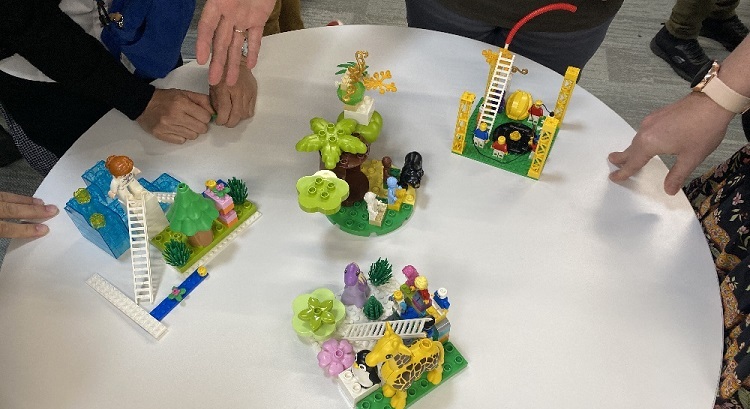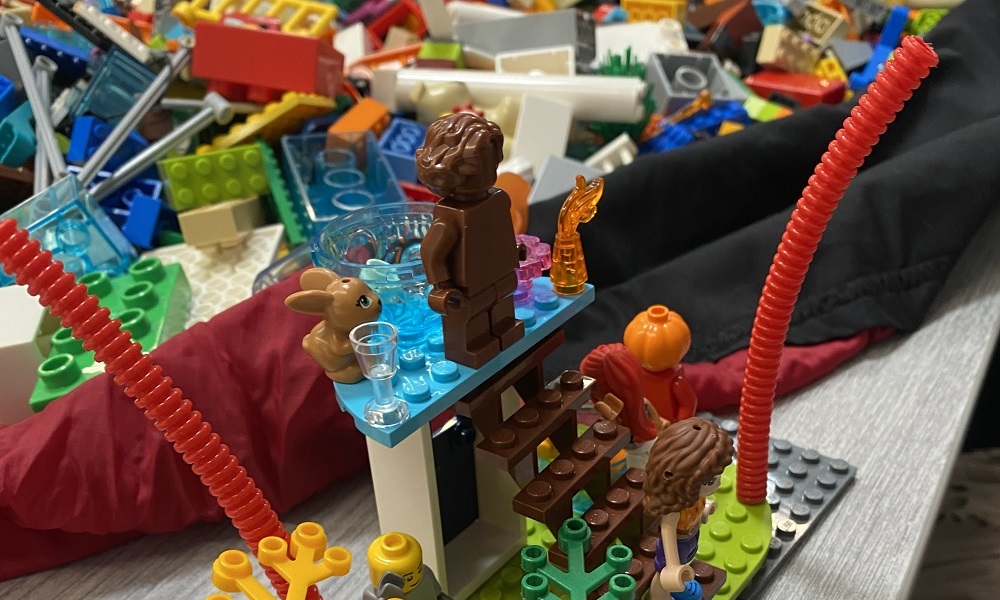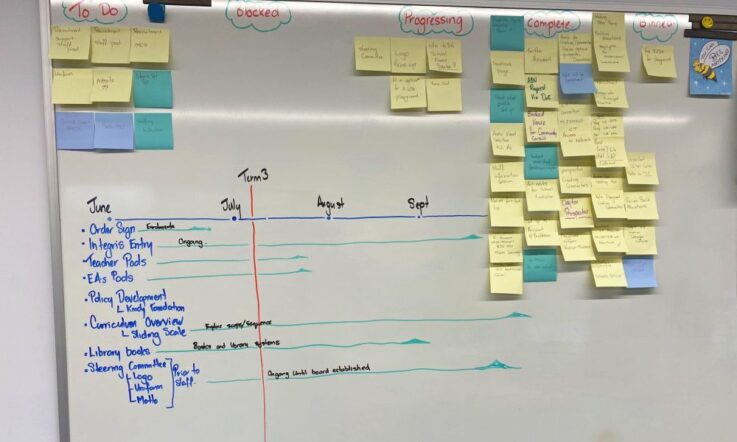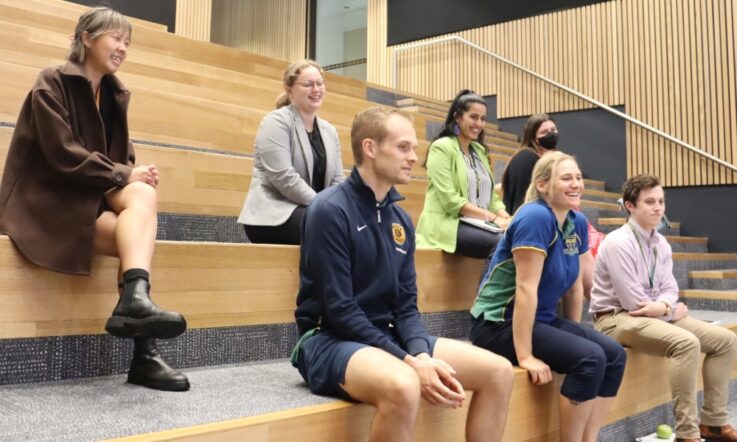Schools looking to recruit new teachers face significant challenges in not only selecting candidates from a diminishing pool of applicants, but also finding people who have qualifications appropriate to the school’s specific needs.
That is why some schools are adopting creative approaches to recruitment to optimise the hiring process and onboard the best candidates for their school community.
Dayton Primary School is a new public school in Perth, Western Australia, that will open its doors to students at the beginning of the 2023 school year. Leaders have recently undergone a second-stage teacher recruitment process to find staff that will form part of their foundation team.
To do this, they threw out the concept of traditional job interviews and instead enlisted the help of Joel Birch from Firebird Learning to host a recruitment session incorporating Lego Serious Play.
Associate Principal Rachael Lehr says they were determined to find the right people for the jobs on offer.
‘Every job we've offered is a permanent job, so you really do have to get it right,’ she tells Teacher. ‘We were looking for, not so much teachers with years of experience, but we really wanted people that were passionate about what they do and that they really liked kids.’
Lehr and Principal Ray Boyd invited a shortlist of around 35 candidates to participate in the Lego Serious Play session, led by Birch, which ran on a Saturday morning.
What happened on the day
On the day, Birch posed 3 ‘big’ questions on the board and candidates were able to use Lego to construct their responses. They then had the opportunity to share their stories and ideas with the wider group.
‘If you wanted to talk about something, you needed to build it in,’ Lehr explains. ‘A lot of it was very abstract in terms of how you interpreted it, so they could say anything about it. It was just really cool to see how people put their ideas into the Lego build.’
Birch says with a conventional interview, you don’t necessarily get an authentic picture of someone’s soft skills and values.
‘If you ask the questions right and you establish that environment where the simulation demands it, you are going to see those soft skills and those values play out in real time, right in front of everyone else,’ he says.
Throughout the session, the school leadership team walked around the room and observed the candidates at work. The participants also recorded each other on video explaining their Lego builds and the stories behind them. Lehr says being able to watch the videos back afterwards was invaluable.
‘I know we've done traditional interviews where everyone starts to blur together and afterwards you go, “Oh, who said that?” You're trying to take notes and you're missing things. I just found it really great that you could go back and listen again and again,’ she says.
Undermining the competitive dynamic
As a Certified Facilitator of LEGO Serious Play, Birch says this method allows participants to let go of any nervousness or tension, and get the entirety of their ideas out on to the table.
‘It overcomes some of those shortcomings that your conventional interviews might have where the quiet people prefer to chew on an idea before they contribute something. They get their time to speak and the conversation hasn’t run off without them,’ he tells Teacher.
‘I think the one of the things that just plagues job interviews is that they are stressful and people might get to a point where they are interviewing the employer as much as the employer is interviewing them.’
By incorporating play into the process, Birch says it lowers the perceived stakes and it allows everyone to be a little more authentic.
‘It throws that canned question-and-answer process out the window and gets every applicant in the room at ease. Everyone's able to kind of detach their sense of reputation from it and just be a lot more honest and a lot more courageous about what they bring into the conversation.’

Birch says he designed the session to ensure candidates could have big, deep conversations about the work they do, and where they could learn from their colleagues and peers at the same time.
‘I wanted to design a session that would be a valuable experience for everyone in the room, whether they came out of it with a job offer or not,’ he says.
‘The best decision we’ve made’
Lehr describes this approach to recruitment as ‘the best decision we’ve made’ for a number of reasons. Firstly, it was equitable, as everyone had the same amount of time to answer the questions and build their responses. It was also a really natural environment that felt similar to a staff room at lunchtime, she says. Another positive was the fact that the leadership team could see participants interacting with their peers, which is something that can’t really be emulated in a traditional interview.
‘There were lots of things that made it a really good decision. So much so that we said, “That was so cool. Let's do it again”,’ she says. Dayton has since used the process again to recruit for Education Assistants.
And while Birch says he understands this approach isn’t for everyone, Dayton Primary School has definitely seen clear benefits from taking a more creative approach to recruiting staff.
‘I think it takes a certain level of courage and weirdness to do something weird, and if anyone's going to step outside the box and do something a bit fun and different, it’s Rachael and Ray,’ he says.
In your school context, have you ever considered taking a more creative approach to recruitment? Which approach have you found most effective in finding the best candidates for the jobs on offer?
When recruiting new teachers, which skills are most important to you? Are there certain values or attributes that you look for in the people you employ?



